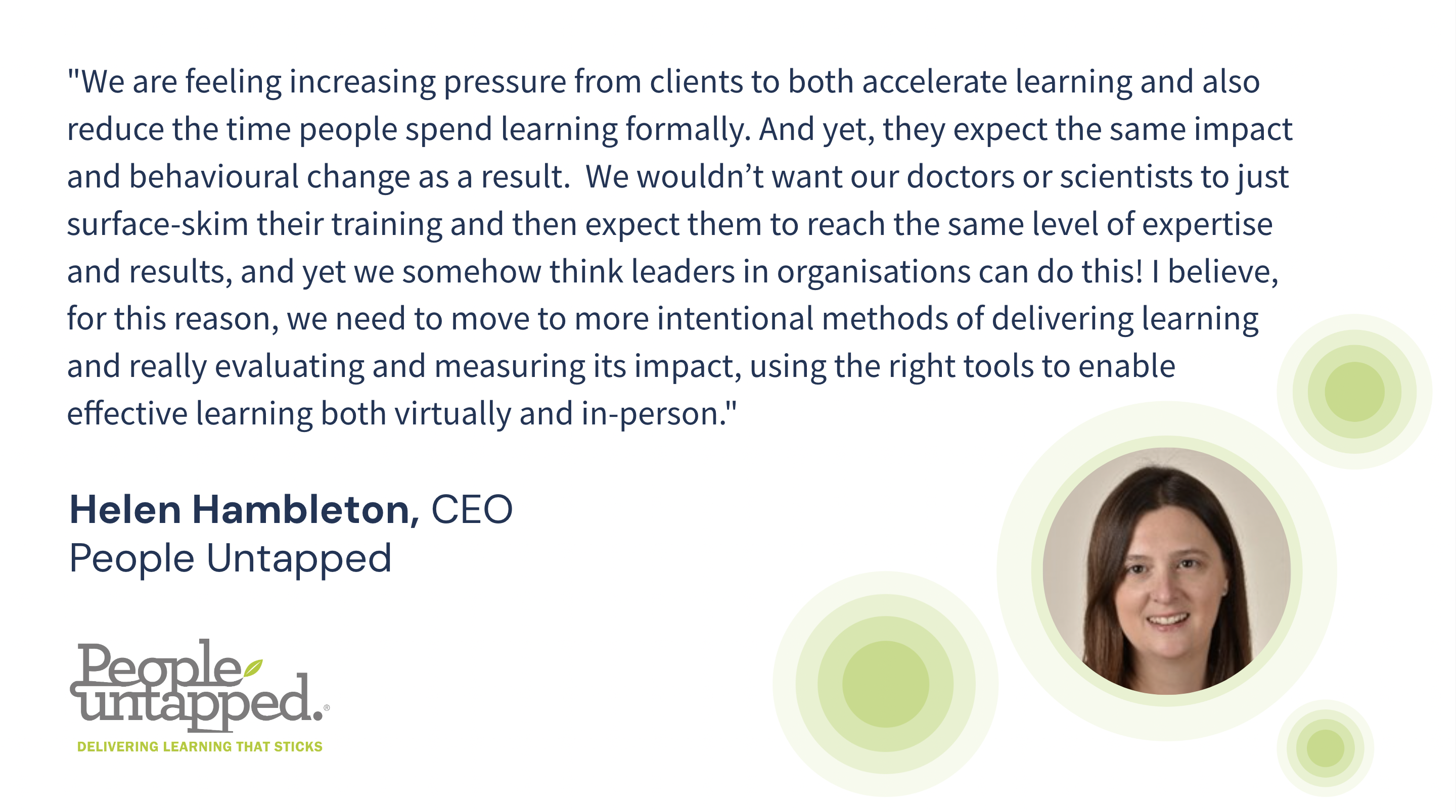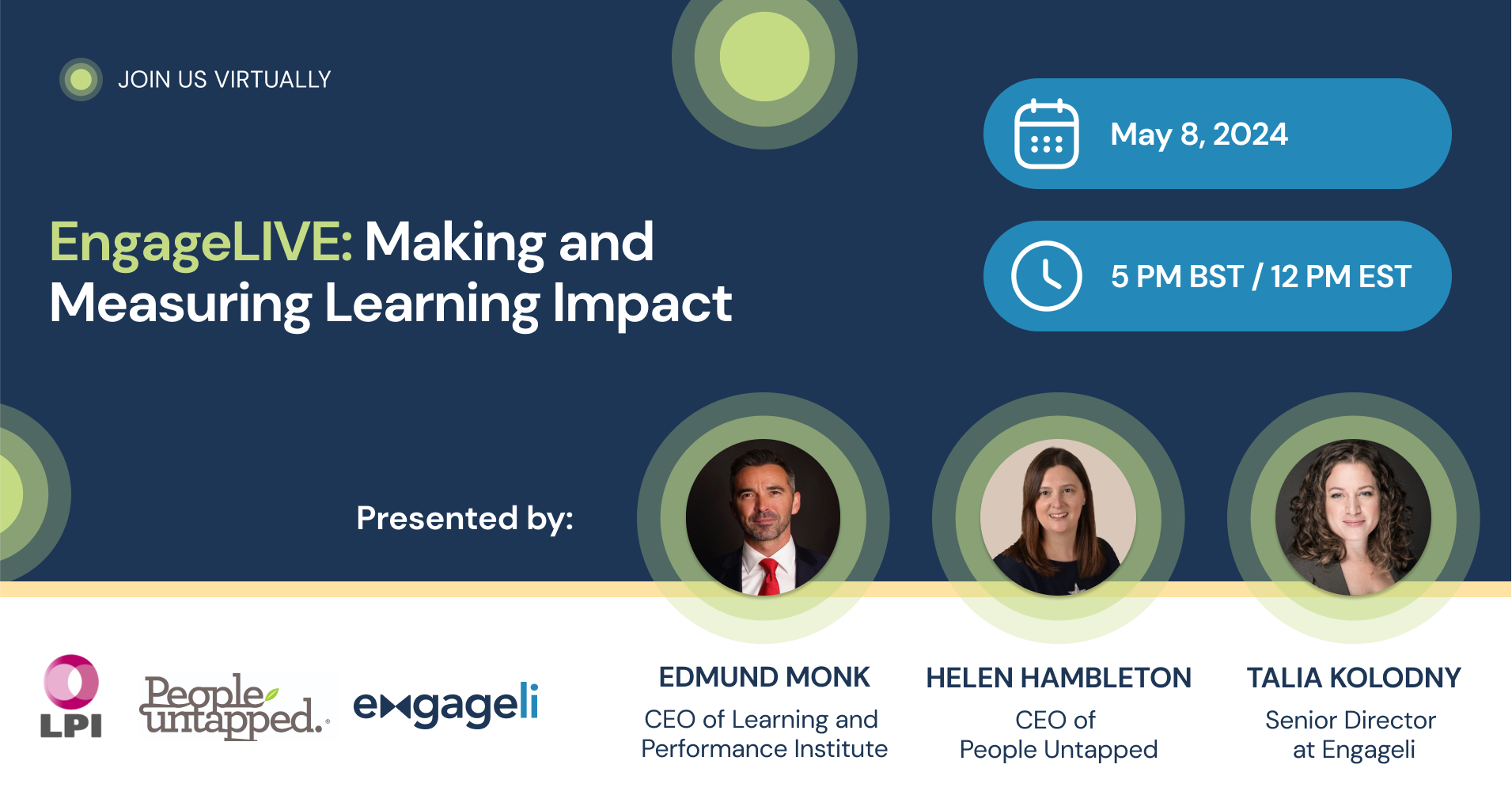Demonstrating the true impact of learning has puzzled L&D leaders for decades, and it seems technological advancements have only heightened the importance of this challenge. There are new expectations and pressure to adapt, making the need for innovative tools and approaches more urgent than ever. The need to validate the efficacy of learning programs should be closely tied with overarching corporate strategies, but that link is not always straightforward. The question confronting organizations is now: How can we authentically measure and present the value of learning in this new era of rapid technology shifts?
AI is shifting expectations
Leaders in the space are feeling the pressure. The rapid growth and scale of AI tools for learning has further intensified the expectation that corporate learning should be quick and results should now be achieved more rapidly with less resources. In a recent conversation with the CEO of People Untapped, a leading L&D provider in the UK, working with corporate clients globally, she shared the challenges of managing expectations:
 Don’t fall for “vanity metrics”
Don’t fall for “vanity metrics”
Traditional metrics, like the number of clicks into an LMS/VLE or basic attendance tracking, reflect a partial and often superficial view of learning. They offer a glimpse into engagement but fail to capture the depth of learning or its application in the workplace. If L&D leaders want a "seat at the table", they must connect their outcomes to the business. That requires more insight into whether or not their programs are moving the business forward. Are employees just showing up or are they actively learning? Are they becoming more proficient? Is that proficiency gain impacting the business? Is the impact worth the investment?
The significance of engagement is well researched, including the impact of employee engagement on performance, retention and satisfaction. Gallop’s report on “The Powerful Relationship Between Employee Engagement and Team Performance” is one example, with a meta analysis of more than 100,000 teams showing the clear correlation between engagement and business outcomes. As for learning, engaged learners are more likely to absorb and apply new skills, enhancing both their personal growth and organizational value. Findings suggest that engagement plays a pivotal role not just in learning, but in fostering a satisfied and committed workforce.
Yet, capturing this level of engagement requires a shift from traditional approaches to more intentional learning analytics and insights. Purpose-built tools are designed not just to track, but to evaluate and enhance learning outcomes through deep learning insights. They allow L&D professionals to gauge how learners are interacting with the content, with one another, and most importantly, how they are applying what they've learned in real-world scenarios.
Choose the tools that were built for learning
Intentional learning technology, such as Engageli, the Active Learning Platform, can provide learning professionals deep insights into progress, achievement and engagement levels. As an example, focusing on a meaningful metric such as time-to-proficiency can provide an insightful correlation between reducing costs and enhancing the effectiveness of learning programs. For L&D leaders, aligning their programs with the broader goals of their organization and demonstrating tangible business impact, can only be achieved with meaningful impact metrics.
As we consider the future of L&D in the workplace, the focus must be on leveraging technologies that offer these deeper insights. Tools that are purpose-built for learning, equipped with advanced analytics, will empower L&D leaders in their mission to not only prove but improve the value of their learning and training programs.
The journey to measuring and showcasing the impact of L&D is complex but crucial. By transcending “vanity metrics” and embracing approaches and technologies that provide real, actionable insights into learning engagement and application, we can ensure that corporate learning not only meets but exceeds its potential to drive better learning as well as business success.
---
Join the upcoming EngageLIVE event on “Making and Measuring Learning Impact” to dive further into this topic with the CEO of the Learning and Performance Institute and the CEO of People Untapped. To register, visit our event page here.


